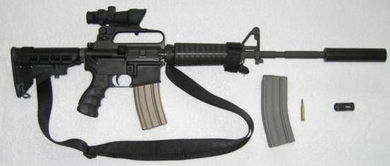Understanding the AR-15 Trigger: A Comprehensive Guide
When it comes to the AR-15, one of the most crucial components is the trigger. The trigger is the part of the firearm that initiates the firing sequence, and it plays a significant role in the overall performance and accuracy of the weapon. In this article, we will delve into the intricacies of the AR-15 trigger, exploring its various aspects and how it affects your shooting experience.
What is a Trigger?

A trigger is a mechanical device that, when pulled, releases the hammer or striker, which in turn ignites the primer of the cartridge, causing the firearm to fire. In the case of the AR-15, the trigger is a critical component that can greatly influence the weapon’s performance.
Types of AR-15 Triggers

There are several types of AR-15 triggers available on the market, each with its own unique characteristics and benefits. Here are some of the most common types:
| Type | Description | Advantages | Disadvantages |
|---|---|---|---|
| Standard Mil-Spec | Standard issue trigger found on most factory AR-15s | Reliable, affordable | Heavy pull weight, less responsive |
| Match Grade | Lighter pull weight, improved responsiveness | Enhanced accuracy, better control | More expensive, may require professional installation |
| Custom | Wide range of customization options, including pull weight, overtravel, and trigger pull | Ultimate control, tailored to individual preferences | Expensive, requires expertise to install |
Trigger Pull Weight

Trigger pull weight is a crucial factor to consider when selecting an AR-15 trigger. It refers to the amount of force required to pull the trigger and initiate the firing sequence. Here’s a breakdown of different trigger pull weights and their effects on shooting:
- Standard Mil-Spec (6-7 lbs): This is the standard trigger pull weight found on most factory AR-15s. While it is reliable, it can be heavy and less responsive, which may affect accuracy and control.
- Match Grade (3-4 lbs): A lighter trigger pull weight, such as 3-4 lbs, is preferred by many shooters for its improved accuracy and control. It allows for more precise trigger control, which is essential for long-range shooting and competition.
- Custom (1-2 lbs): Custom triggers can be set to an extremely light pull weight, typically between 1-2 lbs. This is ideal for rapid-fire scenarios and can significantly improve the weapon’s performance in such situations.
Trigger Overtravel
Trigger overtravel refers to the distance the trigger travels after the initial pull until it reaches the point of engagement with the sear. Reducing trigger overtravel can improve the weapon’s accuracy and control. Here’s how it works:
- Standard Mil-Spec (0.020 inches): The standard overtravel on a Mil-Spec trigger is 0.020 inches. This can cause some shooters to feel like they are “pulling through” the trigger, which may affect accuracy.
- Reduced Overtravel (0.010 inches): A reduced overtravel trigger, such as 0.010 inches, can provide a more consistent and controlled trigger pull, leading to improved accuracy.
Trigger Pull and Overtravel: The Perfect Combination
Combining the right trigger pull weight with reduced overtravel can significantly enhance the AR-15’s performance. Here’s a table that shows the ideal trigger pull weight and overtravel for different shooting scenarios:
| Shooting Scenario | Trigger Pull Weight | Trigger Overtravel |
|---|---|---|
| Standard Shooting
|










